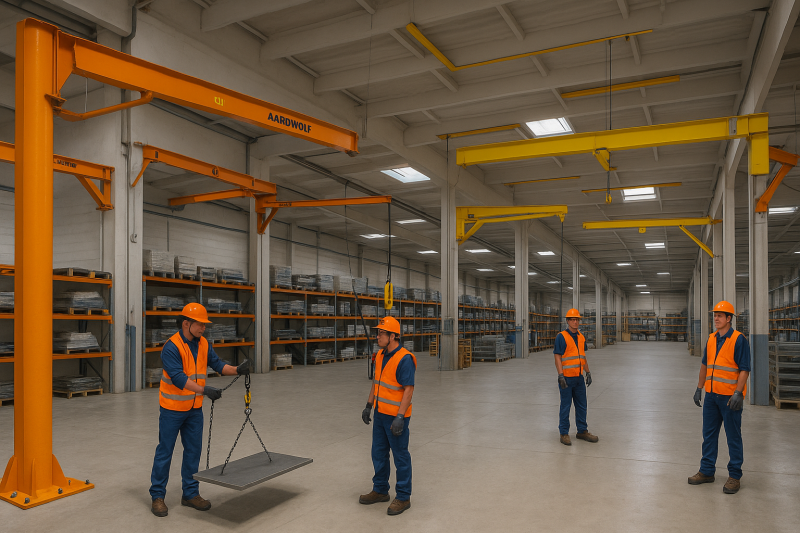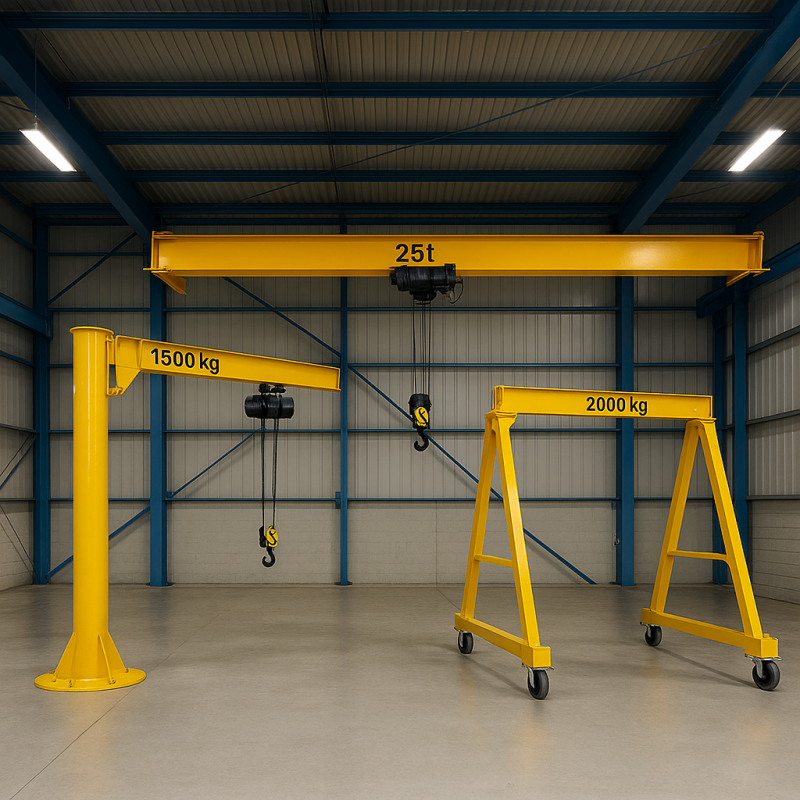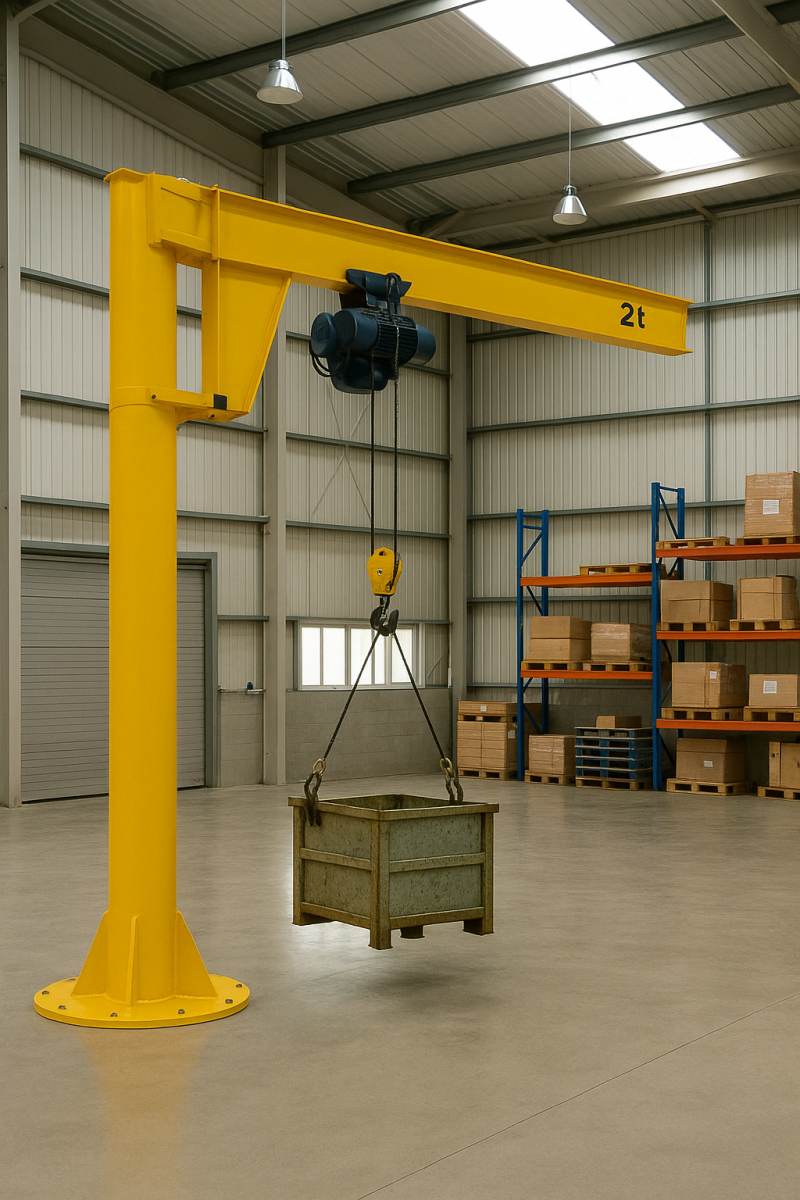



Whether you're using a freestanding jib crane, a wall mounted jib crane, or even a ceiling mounted jib crane, automation and smart features now offer game-changing enhancements in productivity, safety, and control.
If you're not familiar with the core applications, begin by reviewing what is a jib crane used for to understand its essential role in lifting operations.
This article will explore the most critical smart features available in automated jib cranes and how they impact operations across different industries.

Traditional jib cranes provide localized lifting capabilities—great for repetitive tasks within a fixed radius. However, the addition of smart automation enhances every aspect of their operation:
By combining mechanical design with digital intelligence, smart jib cranes transform routine lifting into a streamlined, data-driven process.
If you're evaluating different options, start with what are jib crane types for a foundational understanding.

Automated jib cranes allow operators to set repeatable lift and drop points through pre-programmed logic. This ensures:
For example, an articulating jib crane with dual pivot points can lift a part from a conveyor and place it at an exact spot on an assembly bench—every time.
Integrated load cells track weight in real time and offer the following benefits:
These sensors are especially useful when handling diverse materials or working with third-party automation systems.
Manual push trolleys are being replaced with smart, motor-driven systems that offer:
These are common in ceiling mounted jib cranes, where precision and coordination with overhead machinery are essential.
Smart pillar jib cranes and wall-mounted variants now feature obstacle detection and motion interlock systems. Benefits include:
Looking to install one? Explore how to build a jib crane to see installation steps for safety-compliant systems.
Smart jib cranes can be operated via:
These interfaces allow for operation from a safe distance and give technicians access to usage analytics and fault logs.
Modern automated jib cranes come with embedded sensors and control units that:
IoT-enabled cranes are particularly valuable in industries where traceability and performance metrics are critical.
Learn how to align features with performance benchmarks in How Automation Transforms Jib Crane Functionality.

| Jib Crane Type | Smart Feature Compatibility | Key Benefit |
|---|---|---|
| Freestanding | Full | Best for wide-radius, heavy-duty lifting |
| Wall Mounted | Moderate to Full | Ideal for constrained work cells |
| Ceiling Mounted | High | Integrates seamlessly with automated overheads |
| Articulating | Full | Handles complex paths and multi-zone lifting |
| Pillar Mounted | Basic to Moderate | Great for light-duty workstation automation |
Looking for a specific configuration? View specs on how to build a jib crane wall-mounted.

Smart automation has brought new levels of precision, safety, and integration to jib cranes, making them essential tools in any modern, high-efficiency facility. Whether you're deploying a freestanding model in a warehouse or a wall-mounted variant in a confined space, the key features listed above will drive better results and safer operations.
Still deciding what’s right for your factory or warehouse? Begin with the basics—what is a jib crane used for—then explore how it compares in larger systems via Jib cranes and overhead cranes solutions.
References
1. How to operate a Jib Cranes safely
3. Over brace jib crane wall mounted
5. Is a Jib Crane a Gantry Crane
6. Articulated Jib Crane Wall Mounted
8. Manual Counterbalance Crane
10. Over Braced Jib Crane Column Mounted
Sign up to receive the latest info on new Aardwolf products, special offers and more.
By signing up you agree to receive emails from Aardwolf with news, special offers, promotions and other information. You can unsubscribe at any time.